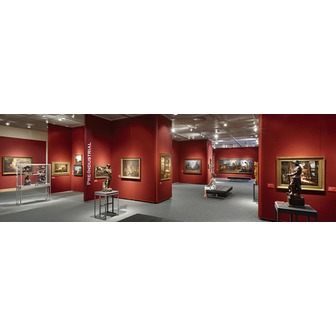Grohmann Museum





Grohmann Museum
The Grohmann Museum at Milwaukee School of Engineering is one of Milwaukee's newest attractions and home to the world's most comprehensive art collection dedicated to the evolution of human work.
The museum welcomes visitors to three floors of galleries where a core collection is displayed as well as special themed exhibitions, so you'll always see something new. The museum also has a spectacular rooftop sculpture garden, and amenities such as a vending café and store.
The Eckhart G. Grohmann Collection "Man at Work" comprises more than 900 paintings and sculptures from 1580 to the present. They reflect a variety of artistic styles and subjects that document the evolution of organized work. From farming and mining to trades as glassblowing and seaweed gathering. Later, it is machines and men embodying the paradoxes of industrialism-- dark factory interiors with glowing molten metal juxtaposed with workers.
The museum is named in honor of Dr. Eckhart Grohmann, an MSOE Regent, Milwaukee businessman and avid art collector, who donated the Man at Work collection to MSOE in 2001 and subsequently the funds to purchase, renovate and operate the museum that bears his name. Dr. Grohmann and his wife, Ischi, are longtime supporters of MSOE.The collection now comprises over 900 paintings and sculptures that span more than 400 years of history (ca. 1580 - 2007). They reflect a variety of artistic styles and subjects that document the evolution of organized work, from manpower and horsepower towater, steam and electrical power. It was gifted to MSOE in 2001 by Milwaukee businessman and collector Dr. Eckhart Grohmann.
The earlier paintings depict the early forms of work, such as men and women working on the farm or at home. Later images show trades people engaged in their work, such as the blacksmith, chemist, cobbler, cork maker, glass blower and taxidermist. The most recent works are images of machines and men embodying the paradoxes of industrialism of the mid-18th century to post-World War II. These works, often commissioned by the factory's owner, are exterior views of steel mills and foundries surrounded by hefty trains and tracks or dark factory interiors where glowing molten metal is juxtaposed with factory workers and managers.
Most of the paintings are by German and Dutch artists, although others include American, Austrian, Belgian, Bohemian, Danish,Dutch, English, Hungarian, Flemish, French and Spanish.
Explore Related Categories







